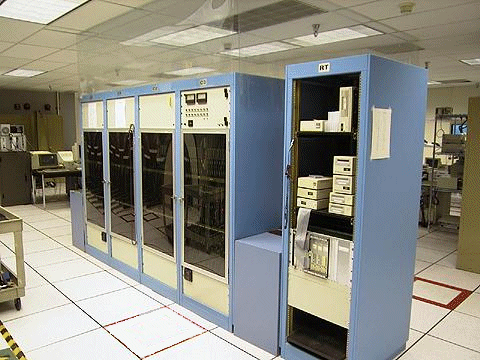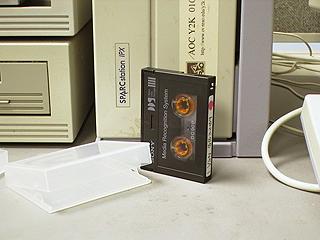|
|
The Correlator Side

|
|
The correlator operator sits in front
of this bank of computer screens at the correlator console. With
these computers the operator can start and stop the tapes and
watch the screens as well as the drives as the data is being
correlated. The data on the monitors concerns time
synchronization, power levels, and correlator output. At times
there may be problems with tapes that were not recorded correctly,
or hardware or software concerns that will show up on the computer
screens as well. The whiteboard behind the console is used for
keeping track of problems with the 24 drives.
|
|
The astronomical data gathered during
an observation are digitized, recorded on magnetic tape, and sent
to the Array Operations Center to be correlated. The reels in
this photograph are glass, 14 inches in diameter, and hold 18,000
feet of tape that is only 16 microns thick. One inch of the tape
can hold as much data as is normally saved on a 3.5 inch floppy
disk.
There are 24 of these tape drives (located along the left wall in
the panoramic view). All of the tapes for a single experiment are
put on the drives, synchronized, and played in unison. The
correlator (below), using a complex mathematical computation
called fast Fourier Transform, combines all of the data from all
of the antennas, simulating a single telescope 5,000 miles wide.
|

|

|
|
All of the information from the large
tapes is compiled and put on a "DAT"(Digital Audio Tape) which is
then sent to the primary investigator in the observation. That
scientist will then analyze (or "reduce") the data to produce a
map or an image similar to the ones featured in our Image
Gallery.
|

|
Modified on
Friday, 26-Sep-2008 12:15:34 MDT
|




